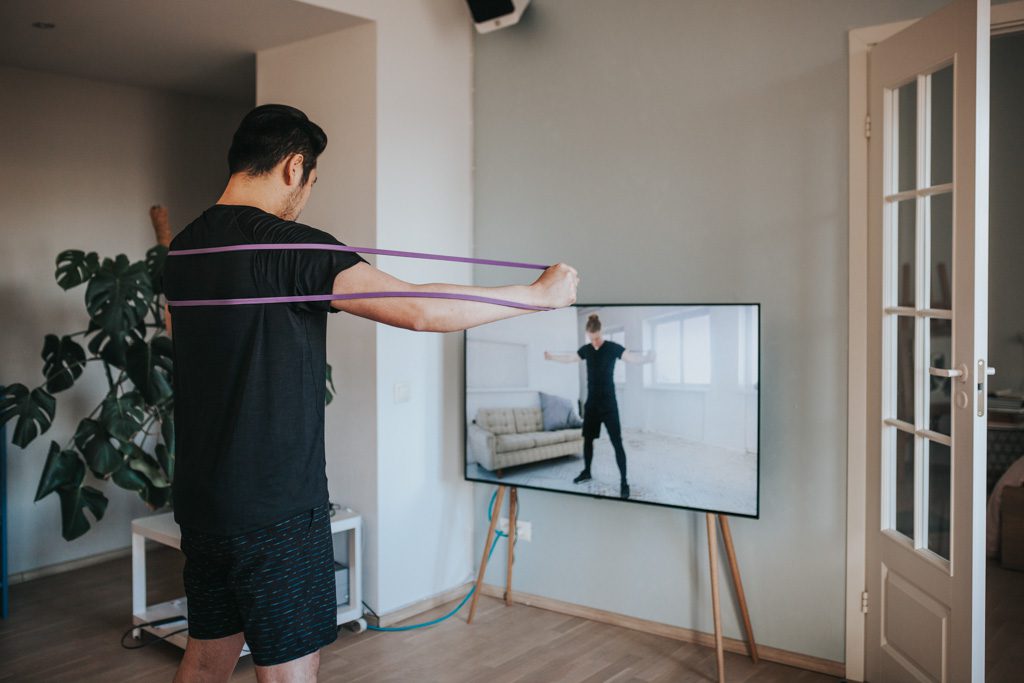Whether you are a fitness expert, an exercise buff or an exercise entrepreneur, starting a personal training business is possible with the proper approach and planning.
When you finish this article, you should have a sound understanding of what it takes to:
- Establish a personal training business.
- Avoid the pitfalls you might encounter.
- Make your personal training business sustainable.
Why Do You Need a Business Plan?
Owning a successful personal training business can be an enriching experience. By helping your clients reach their fitness goals or overcome their physical weaknesses, you can develop strong bonds that could last a lifetime.
However, the business part of the venture will make or break your personal training career. It’s a sobering fact that 90 percent of all startup businesses fail, and personal training businesses are no exception. No matter how much your clients love you, your business practices will determine the fate of your enterprise.
Having formal business training is excellent, but you can learn as you go if you have a good business plan. For this reason, we will continue as if we were putting together your personal training business plan.

Planning Your Personal Training Business
Before you start planning, you should determine what your vision is for your personal training business. Do you see it as a resource for the community or an industry disruptor? And who is your ideal client? College-age athletes, busy professionals, seniors or some other group? The answer will have a significant effect on how you set up your business.
Also, it is essential to decide what outcome you want for your business. For instance, you might want to develop it into an expandable model that leads to employees, franchises or satellites. On the other hand, you might want to keep it a one-person operation. Creating a clear definition of your vision and mission for your business will help shape the planning and operation.
Because you will be the founder of this personal training business, its success relies on you. These are some questions you can ask yourself before moving forward:
- Am I comfortable in a leadership role?
- Am I a teacher and mentor?
- Do I consider myself a problem solver?
- Am I a good salesperson?
- Am I hard to discourage?
If you can affirmatively answer these questions, you are ready to plot out the process of starting your personal training business.
Choosing Your Personal Training Business Model
The first task in starting your business is deciding what business model is best for delivering your service. This decision will dictate your initial and ongoing costs, operational planning, marketing, and revenue potential. With this in mind, here are some major personal training business models that may suit your background, training and ambitions.
Operating in a Private Gym That Charges You a Per Session Rate
Operating in a private gym is a low-cost way to start your personal training business. In this set-up, you train clients using the gym’s equipment and facilities just as the staff personal trainers do. Some gyms allow you to solicit their members and others don’t. Either way, you are responsible for your clients’ safety and liable for any damages attributed to you or them. Most private gyms require you to carry liability insurance.
Typically, your only daily cash outlay would be a per session fee. These fees are usually reasonable unless you’re working in a popular gym. Many small gym owners like this arrangement because they can offer personal training services without incurring salary, liability and tax expenses. Plus, they usually require that you become a paying member—or that your clients become members if you bring them in from outside the gym.
Pros and Cons
Private gym arrangements have the following pros:
- Low entry cost and no maintenance cost—equipment is provided and cared for by the gym.
- No lease, managerial or operational expenses.
- Convenient.
- Flexible: You can switch gyms at any time with no transition costs.
Here are the cons of private gym arrangements.
- It’s challenging to build a brand or create a unique gym experience.
- Sometimes you will face stiff competition. On occasion, other trainers might try to steal your clients.
- You are bound to the gym’s operating days and hours.
- During peak hours, you might have to wait for specific pieces of equipment to become available.
- It’s challenging to develop a client list that you can sell to someone else.
This business model works best when you are a regular gym member and have a friendly rapport with the staff and owner.

Training Clients in Their Homes or On-Site Facilities
Training clients in their homes or condo gyms would be the cheapest way to conduct a personal training business—except for the travel expenses. There are no per-session fees or maintenance costs. But you must account for gas prices, parking fees, car maintenance and down time due to travel.
You can offset the travel cost by charging in-home clients more or securing other clients who live in the same neighborhood or building. For this reason, some personal trainers work as on-site trainers for large condo complexes or resorts. A contract or monthly fee might be part of these types of arrangements. But ongoing fees are rarely involved.
If you decide to train clients directly in their homes, you will initially pay a few hundred dollars for the exercise equipment. Inexpensive resistance bands work well for this purpose. In some cases, some of your clients may have well-equipped home gyms.
Starting a Personal Training Business in Your Home
Without travel-related expenses, in-home training is arguably the least expensive way to deliver your service. Some trainers use their garages, backyards, condo gyms or ad hoc gyms to train their clients. This business model gives you more control of equipment choices, your business environment and operating hours.
You will need to acquire and maintain your own equipment, and you’ll have to give up part of your home to the business. If that’s the case, your business should pay you for the use of your home. That might not be possible when you start out, but keep it in mind for the future. An accountant can help you figure out what exact options are available to you.
You must also have insurance, and it’s worth checking into local zoning to make sure your neighbors don’t call in the bylaw officers because your clients are taking up all the parking spaces.
If you don’t have a problem separating work from private time, training clients at your home might appeal to you. It is low cost and low risk. However, it has unique challenges to growth.

Starting an Online Personal Training Business
The advances in internet-based technology have introduced an exciting new personal training business model. Live video chat programs allow you to deliver your training online from anywhere in the world to almost anyone in the world with compatible technology.
Although this venue is still in the early stages, there are many ways you can use online platforms to enhance your business with:
- Non-personalized video fitness programs. You can record a series of exercise instruction sessions and market subscriptions to them.
- Hybrid online and in-person training. This is an excellent benefit for clients who don’t like missing personal training appointments because of vacations, deployments or quarantines.
- Online group personal training. Live online chat services like Zoom, Skype and Google Meets allow you to train clients in separate locations simultaneously.
- Customized programming.
Get the Two-Brain ebook “How to Add Online Training in 24 Hours”
Entry costs for this online personal training business model are low. The initial cost generally ranges from $300 to $500 for a webcam with a tripod, a microphone, lights and a reflector, exercise equipment and props. If you are short on cash, you can use the built-in equipment on your laptop or desk computer until you can upgrade.
More info on media equipment: “Best Gear for Online Classes”
When it comes to software, Zoom, Skype, Google Meet and other cloud-based chat platforms will do if you’re leading sessions. With some variations, free versions of communications software usually offer hosting of unlimited one-on-one or group sessions (sometimes with time limits).
For example, Zoom is very popular in the fitness world, and the free version will serve you well for one-on-one sessions. If you have groups, you’ll hit a 40-minute time limit with the free version. If you want to go longer with groups, add about 1 GB of recording and enable social media streaming, the upgrade to the pro subscription is only about $14 per month. Otherwise, your only monthly cost would be the internet connection.
Other platforms exist and have features specifically for fitness trainers. The cost for coaching software varies widely—click here to see our 2020 review of the top platforms.
Remember: Online coaches don’t always lead workouts live. Many provide programming and accountability instead. For more info, listen to this podcast: “Online Coaching: Pro Tips for Excellence and Efficiency.”
Things You Will Need to Start a Personal Training Business
Allocate most of the initial cost for starting a personal training enterprise to business essentials. Here is a rundown of the main requirements.
Personal Training Certification
Along with providing knowledge and coaching skills, a credential in personal training gives you a professional advantage in dealing with clients and the public. Plus, this accomplishment qualifies you for insurance.
The initial cost of a personal training certificate ranges between $500 and $2,000. Some credential institutions require maintenance and renewal costs along with continuing education requirements. Some of the best personal training certifiers are listed in the table below.
| Certifier | Prerequisites and Renewal Requirements | Price (USD) |
| American Council on Exercise (ACE) | Age 18, high-school grad., CPR and AED cert., government-issued photo ID; 20 hours of continuing education, $129 renewal fee every 2 years | $509 – $899 (financing avail.) |
| Athletics and Fitness Association of America (AFAA) | CPR and AED cert., valid photo ID; 15 hours of continuing education, $99 every 2 years, $399 to recertify for life | $499, or $124 per month for 4 months |
| American College of Sports Medicine (ACSM) | Age 18, CPR and AED cert., valid photo ID, high-school grad.; 45 continuing education credits, $45 renewal fee every 3 years | $349 |
| CrossFit Level 1 | Attendance, full course participation; valid for 5 years | $1,000 |
| International Sports Science Association (ISSA) | Age 18 or high-school grad., CPR and AED cert., government-issued photo ID; renewal free every 2 years with 20 hours of ISSA continuing education | $69 per month and up for 12 months |
| National Academy of Sports Medicine (NASM) | High-school grad, CPR and AED cert., government-issued photo ID; 20 contact hours of continuing education, $99 renewal fee every 2 years or recertify for life for $329 | $674 -$2,024 |
More info: “The Best Certifications for Personal Trainers”
Business Bank Account, Business License and Insurance
Commingling your business funds with your private funds is a recipe for a tax-time nightmare. At the very least, it can lead to money mismanagement, and confusion as to whether you’re making a profit or taking a heavy loss can lead to disaster. For these reasons, a business bank account is a valuable tool.
Before you open your business bank account, register for a business name. This move helps you distinguish your personal life from your business activities even more. For example, when you open your business bank account under your business name, it will appear on all the payments, bills and statements. As a result, your business record keeping will be much easier.
For added protection, you should register your personal training business as a limited liability company (LLC). This simple and relatively inexpensive step separates your business liability and finances from your personal affairs: A client or any other party cannot go after your personal assets in a lawsuit against your business.
Another essential form of protection is personal training insurance. It helps cover the cost of client injuries or other mishaps. For $200 to $300 per year, you can get up to $2 million in general liability insurance. Many credential issuers are connected to insurers; for example, NASM partners with Next Insurance Inc. to offer trainers professional and general liability insurance for as little as $11 a month.

How Much Should You Charge?
On average, personal trainers charge between $35 to $100 per hour—a very wide range.
To find your starting point, figure out what you need to charge to earn the income you need. Then ensure your services provide the value that justifies your rate. If you can add more value for your clients, you may be able to enter the market at a higher price point. Examples of adding value include perks like exercise/nutrition packages or off-hour sessions.
If your expenses demand you set a higher price than the standard rate, you can focus your marketing on couples, pairs or threesomes.
For more info on personal trainer wages, read “How Much Does a Personal Trainer Make?”
How Do You Get Personal Training Clients?
As you start your personal training business, the most important and challenging business task is getting clients. But new technology has made this an exciting time to start a personal training business. There are many ways to channel your efforts and money to reach potential clients.
Identifying your target market is a crucial task in marketing your personal training business. Essentially, your target market is a segment of people who are most likely to become your clients. You can group them by age, gender, occupation and many other categories. Generally, it is easier to truly define your target market after operating your business for a while. In the meantime, you can consider who you like working with and do some online research to find out which market segments are attracted to your personal training business model.
Once you have reasonably identified a target market, you can attract clients with old and new marketing techniques.
Old-School Marketing and Advertising Techniques for Trainers
Although there are many new options available to promote your business, here are some long-standing techniques that still work.
- Telling everyone you know that you’re starting a personal training business.
- Circulating business cards, brochures, free consultation coupons.
- Joining networking groups, giving free seminars, organizing free walk groups and exercise sessions.
- Wearing T-shirts and hats with your business name on it.
- Starting by recruiting potential clients from your inner circle of family and friends.
Read: “Personal Trainer Business Cards: Everything Coaches Need to Know”
New-School Marketing and Advertising Techniques for Coaches
Your first online marketing move should be to build a website for your personal training business. For a very low setup cost and monthly expense, website builders such as Wix, Squarespace and Monster provide easy-to-use tools and templates to make very professional-looking websites. They also offer domain names, business email addresses and traffic analytics.
After you build the website, you can try these options to fill up your client schedule.
- Fill your website with helpful content that appeals to your target market.
- Create exercise instructional videos on YouTube and Instagram.
- Develop a social-media presence by posting exercise-related content and joining fitness groups on Facebook, LinkedIn, Twitter and Pinterest (be sure to make impressive profiles).
- Create a profile on Yelp and get clients to write positive reviews on your business.
- Create a Google Business account and get clients to write good reviews.
- Use digital marketing.
Consumer service websites like Yelp and Thumbtack provide free listings for service providers. With their per-click advertising, you only pay for the potential customers who visit your website or call you. Plus, their filtering tools allow you to focus on your target market. Facebook is another platform that offers many tools to a marketer. Remember this: If you choose to spend money on ads, track your metrics so you know if you’re getting a return on your investment.
For our “Affinity Marketing Guide” and “Free Digital Marketing Course,” click here.

Making Your Personal Training Business Profitable
When you consider all factors, your net profit potential depends on how well you balance your total monthly revenue and your ongoing expenses. This fact highlights the importance of maintaining good accounting practices.
Fortunately, you can invest in inexpensive accounting or bookkeeping software to help you keep track and record your transactions and balances. Also, payment apps like PayPal, Venmo and Zelle do an excellent job collecting, processing and recording your transactions.
The Road to Success in Personal Training
With a thoughtful plan, starting a personal training business isn’t that hard.
Due diligence before you take the plunge can help you profit in a lucrative market by avoiding the pitfalls that sink most startups. Being prepared and staying informed of developments in this industry can give you an advantage.
Two-Brain Business can help you along the way. For a detailed done-for-you business plan for personal trainers, click here.
About the Author—John Burson successfully ran a personal training business for over 20 years, and he has written volumes of published articles on business entrepreneurship, finance and the fitness industry.

